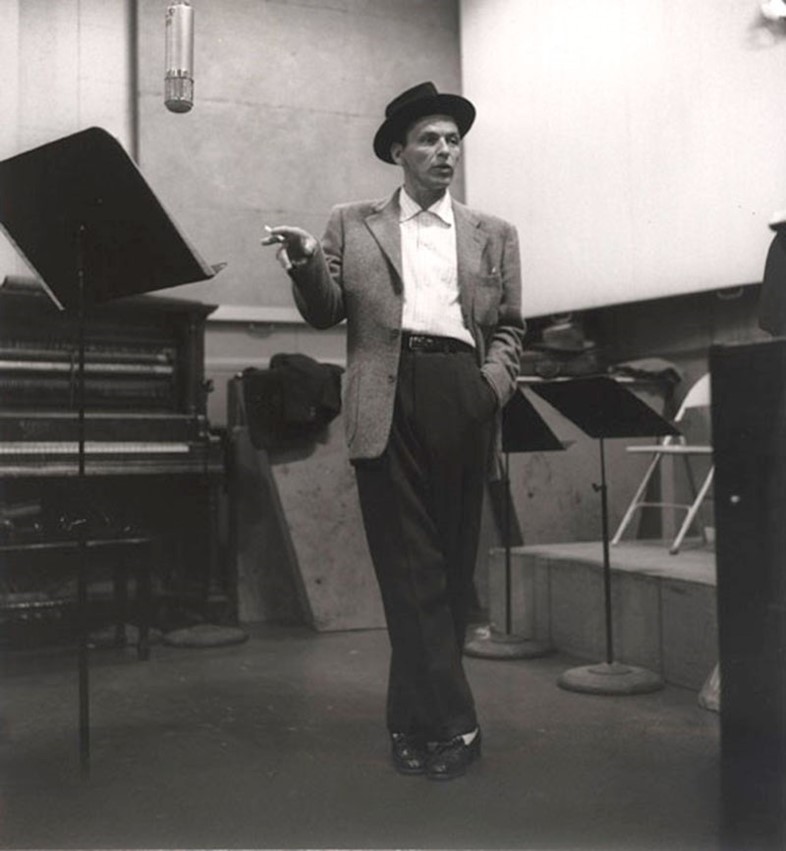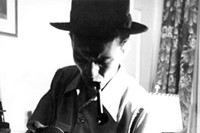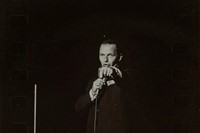As a new exhibition of Sinatra portraits opens at Proud Chelsea, we talk with his granddaughter and curator of the show, Amanda Erlinger, to uncover her most treasured memories of the great man himself
When you hear the name Frank Sinatra, many things spring to mind. First and foremost, the American singer’s dulcet crooning, as cherished now as it was in his golden era heyday. Then, of course, there are his movie roles – think Fred Zinnemann’s wartime classic From Here to Eternity or the memorable High Society, alongside Bing Crosby and Grace Kelly. Then again, you might think of his suave signature style – Sinatra was rarely seen in anything but a crisp white shirt and immaculately tailored suit, topped off by a fedora – or his piercing azure eyes, which earned him the famous nickname “ol’ blue eyes”.
What you are less likely to know him for, however, is his fondness for selfies – something that even his family members were surprised to discover. When Sinatra’s granddaughter, Amanda Erlinger, began archiving the vast collection of vintage family photographs belonging to her grandmother, Nancy Sinatra Senior, she came across a self-portrait the singer had captured in his bathroom mirror in 1938. “He took a selfie!” she cried out to Nancy Sr., who stared back blankly, utterly perplexed by the modern terminology. As it turned out, her husband had taken an abundance of selfies over his formative years, a number of which are currently on display at Proud Chelsea in London – alongside a delightful array of other Sinatra family pictures and official portraits of the star (by the likes of Terry O’Neill and Milton Greene) – in an exhibition curated by Erlinger.
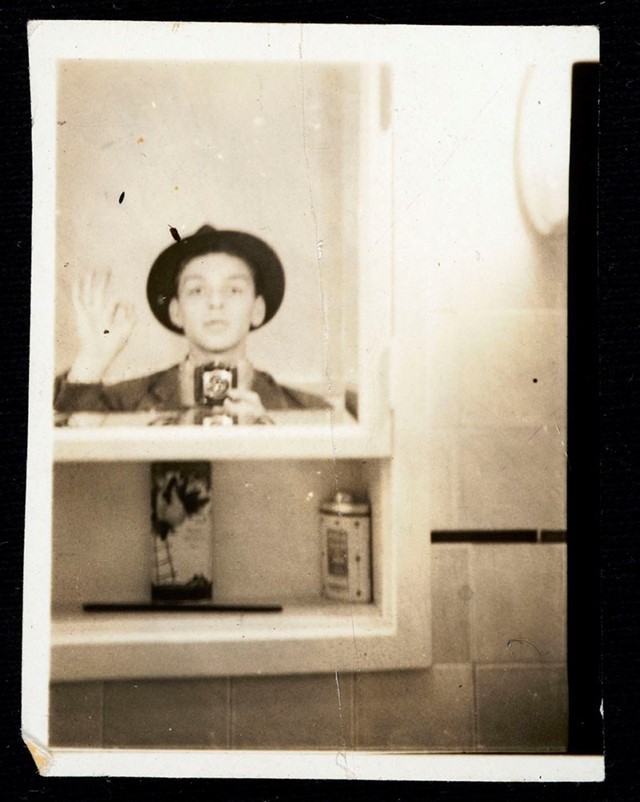
Timed to coincide with Sinatra’s centenary earlier this month, the exhibition presents a wonderfully well-rounded view of Sinatra as both family man and music maker – from a beaming snapshot of the icon lying casually on the grass post-baseball match [he was a lifelong fan of the sport] to a depiction of him doing what he did best: standing in the spotlight singing, microphone in one hand, the other pointing directly at the viewer with a powerful intensity. Here, in celebration of the exhibit and the man himself, we sit down with Erlinger to discuss the show, and her most treasured memories of her grandfather.
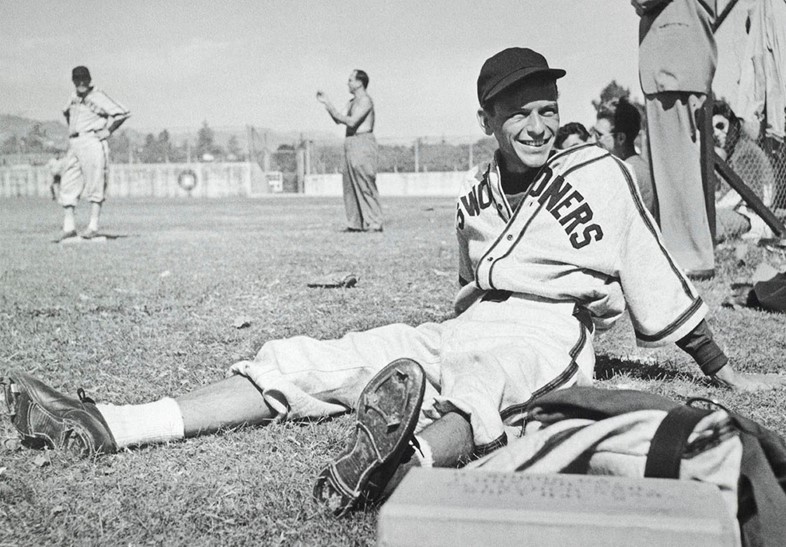
Your earliest memory of your grandfather?
My first memory of my grandpa is being in the pool with him at his home in Rancho Mirage, California. I think I was two years old. He loved to be in the desert, and we spent many wonderful times there with him and our family. I don’t think I thought of him as anything other than “grandpa” for a very long time. Then it became as if he were two different people. He’s always going to be my grandpa, first and foremost. However, I really appreciate and respect what he accomplished and what he means to so many people. It’s truly humbling.
How did the exhibition come about?
The archiving process actually began many years ago, but we didn’t know when or how best to share what we’d found with the public at large. Once I saw what we had, I knew it was going to be special and when Frank Sinatra Enterprises began to work on the centennial celebrations, I think we just felt the timing was right.
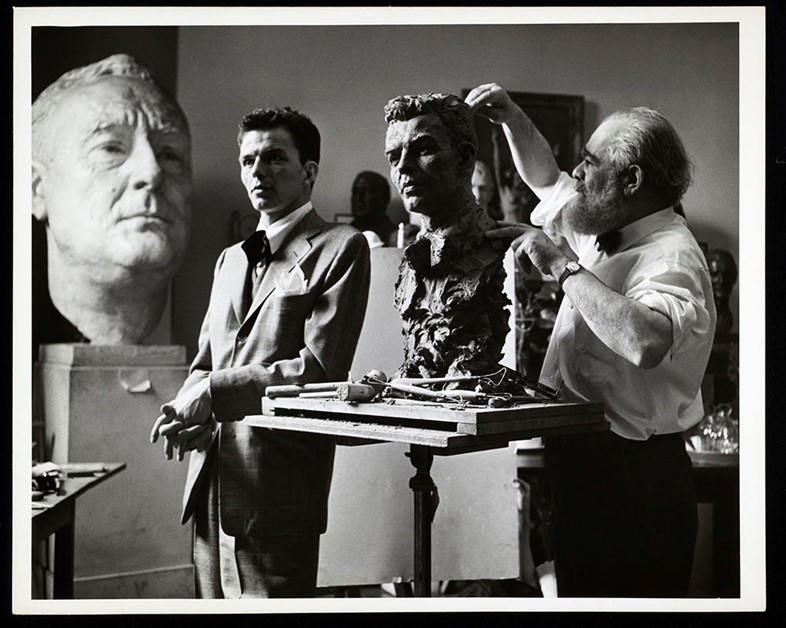
How did Frank Sinatra the star, differ to Frank Sinatra the family man?
My grandpa loved being with his family and friends. He was always so warm and generous with all of us. He loved life, and loved sharing his life with others. I think part of what made him so special was that the man was always there, even when he was working. I think that’s a big reason why people have always been attracted to his persona, and continue to be. He’s real.
Did you discover anything surprising about your grandfather while curating the show?
Not really surprising, but I love that he always had a sense of style. You can see it from the very beginning. In a strange way, he stayed true to himself throughout all the years. It’s pretty remarkable.
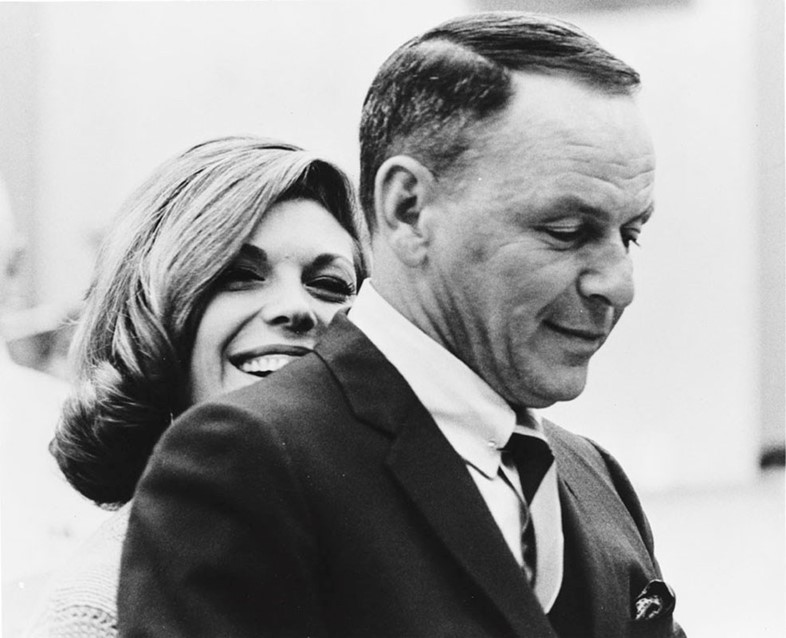
What’s your grandmother’s favourite story to tell about your grandfather?
I’m not sure it’s a story, but she always says that at no time did he ever say “I can’t do that.” He always tried and worked as hard as he could to make it happen. She says that he never doubted. He knew he could do it, and he did. Believe me, she helped him!
What do you hope visitors will take away from the show?
I hope that they will see a side of my grandpa they had not seen before. That would be wonderful.
What was the most valuable piece of advice your grandfather gave you?
Finish school. Go to college. Don’t despair. Never give up.

Sinatra at 100: A Century in the Making is at Proud Chelsea until January 10, 2016.
